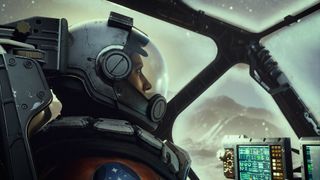"It might not be everyone's cup of tea, but what is?": As Starfield Shattered Space launches, Bethesda reflects on the importance of players speaking their mind
Design director Emil Pagliarulo on how Bethesda went from selling horse armor to visiting distant planets
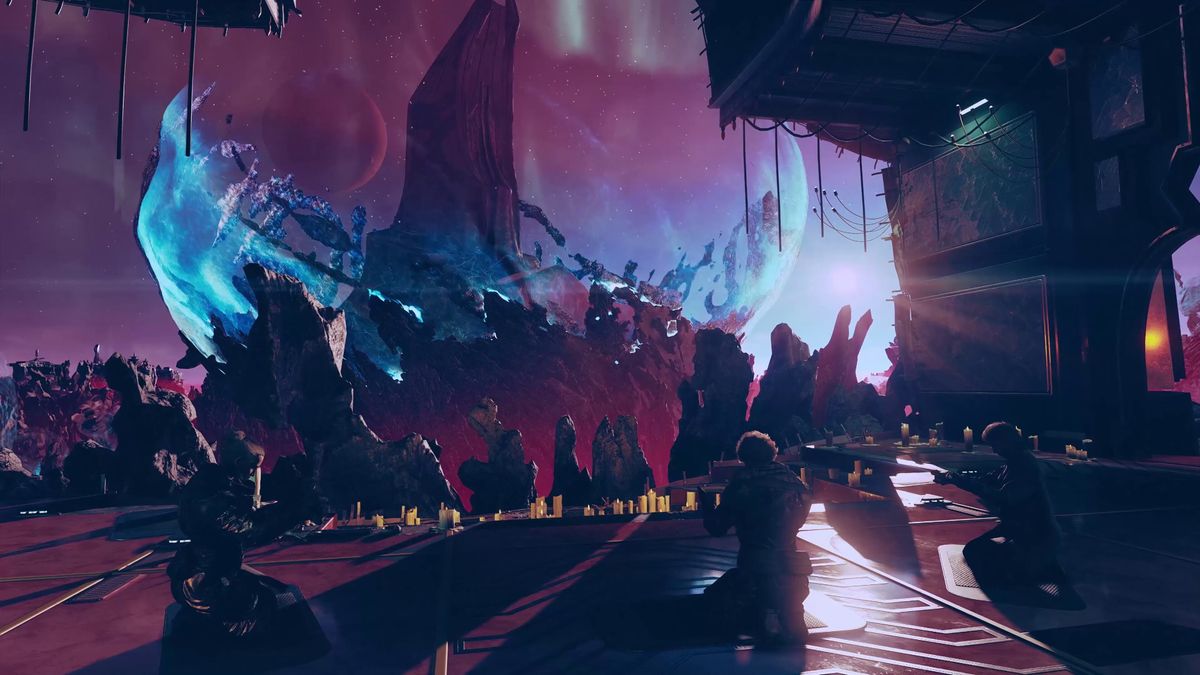
The release of Starfield: Shattered Space is a milestone for Bethesda Game Studios. The culmination of a year-long effort to write the next chapter of its science-fiction epic, where an anomalous fracture of space-time prompts a deadly descent into House Va'ruun. For players who now call the Settled Systems home, this expansion is an opportunity to better understand how Starfield will continue to evolve; and for those left a little cold by Bethesda's latest effort, it's a moment to see how the studio responds to the criticism levied at the core game.
Given the decade-long development journey that Bethesda undertook with Starfield, and the divisive launch that followed, I was keen to better understand the impact this experience has had on the studio. Speaking with design director Emil Pagliarulo, I ask what the development of Starfield has taught Bethesda that he thinks it'll carry onto future projects. His response? "Fans really, really, really want The Elder Scrolls 6."
He jokes, but I think the answer speaks to the specter of anticipation that is constantly hovering over Bethesda. The development of a new IP was always going to be an ambitious, disruptive undertaking – particularly when it comes at the perceived cost of a new Elder Scrolls or Fallout. But Pagliarulo is confident that Starfield is following the right trajectory. "I think in a lot of ways, Starfield is the hardest thing Bethesda has ever done. We pushed ourselves to make something totally different. To just jam into an Xbox the biggest, richest space simulation RPG anyone could imagine. That we pulled it off makes Starfield something of a technical marvel. It's also, in a lot of ways, the best game we've ever made. But for us, most importantly, Starfield has its own unique personality, and now sits right next to Fallout and Elder Scrolls."
Bethesda is proud of Starfield and confident in its future, viewing the broad conversations that emerged after its launch as proof the studio was right to try something new. "It might not be everyone's cup of tea, but what is? We created a new IP, from the ground up, and an experience that is absolutely unique on consoles. And I'm not saying Starfield is better or worse than any other game – just different in what we offer. It's that weird Bethesda blend of immersion, action, and RPG… but also different [to] Bethesda's other RPGs," says Pagliarulo. "Starfield is developing its own unique fanbase – it's big, and it's growing. Bethesda used to feel like the studio of Elder Scrolls. Then it was the studio you'd associate with Elder Scrolls and Fallout. Now it's Elder Scrolls, Fallout, and Starfield. Bethesda Game Studios' big three."
Among the stars
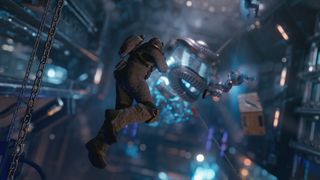
Those "big three" differ in their wildly different settings, but a number of uniting traits ensure Bethesda's distinct fingerprints are over them all. Some are small – the way every conversation begins with the camera zooming into a character's face, for example – but others, like darkly funny random events and background stories told through journals and terminals, define what it means to explore in a Bethesda game. Of course, there's also the sweeping expansions and DLC: from offshoot adventures like Fallout 3's Operation Anchorage, to larger areas such as Oblivion's Shivering Isles and Fallout 4's Far Harbor, the studio has a reputation for being able to build upon its games.
"Any Bethesda developer who has been around since the horse armor days knows that by this point, if we understand one thing, it’s DLC," says Pagliarulo. "That’s not to say we’re on autopilot and don’t think about it now. It means we still think about it and have probably thought about it more than any other studio since those early days. And I think the result of all that contemplating is we have a pretty good handle on how to plug new content into our huge games."
The director points to Fallout 3 as a pivotal moment in Bethesda's philosophy toward DLC: before the addition of 2009's Broken Steel expansion, players "flat out died" in the original ending. "Cue Hudson’s, 'Game over, man!'," jokes Pagliarulo. "Let me tell you, players did not like that. And that was really the moment we realized that our fans don’t want to play our games – they want to live in the worlds we create. That means their experiences never end, and the content, whatever it is, works together as seamlessly as we can make it."
Sign up to the 12DOVE Newsletter
Weekly digests, tales from the communities you love, and more
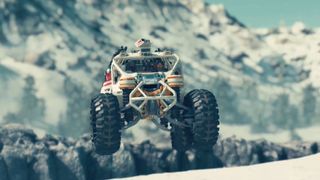
Similarly, Bethesda looked inward when it was time to make Shattered Space, which swaps Starfield's endless planet-hopping for a geographically smaller, story-rich exploration of House Va'ruun. "Always keep your hits in mind," says Pagliarulo. "For Shattered Space, Fallout 4’s Far Harbor was the real touchstone, in terms of landmass size, questlines, quality. That was a really solid DLC. So I’d say we started there."
"But then, as happens when you have something special, the project takes on its own life," he adds. "It becomes its own thing. It exists in its own pocket of awesome outside a comparison to something else. And when that happens, that’s when you dive in, fully committed to the vision, and your gut is just telling you it’s going to be good, because it was made with so much passion."
With its narrower scope, it's likely that Shattered Space will appeal to Bethesda fans who felt that Starfield's vastness lacked the depth of, say, Skyrim's towns and dungeons. Pagliarulo acknowledges that Starfield is "different [to] any game Bethesda has made in the past twenty years," with much of that stemming from how spaced-out everything is. "We broke from our established formula of 'Give the player a giant landmass, and let them wander around and explore tons of specific, hand-crafted content,'" he explains. "In Starfield, you have giant landmasses, and tons of hand-crafted content… but not together. And that’s something a lot of folks missed."
Flight plan
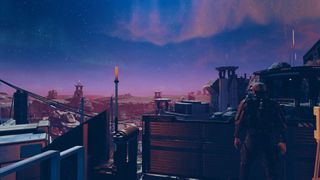
"I feel great about Starfield's future"
Emil Pagliarulo
Pagliarulo believes that Shattered Space is a salve for those players. He points to the expansion's newly-added city of Dazra, which "sits on a hand-crafted landmass" with "oodles" of bespoke content. It's for these reasons that I'm enjoying my own time in the expansion – Dazra and its surrounding plains feel much denser than most cities in the base game, which I often struggled to navigate and find quests in.
"While it doesn’t change Starfield as a whole, it does offer this really unique place that players can go to in order to get that experience," says Pagliarulo. He points to the game's "new or improved content" – such as the Trackers Alliance becoming a fleshed-out faction, the Rev-8 update adding land vehicles, and a host of new options for difficulty customization – as driving broader changes for Starfield. "This is all post-release stuff aimed at giving fans more of what they deserve," he says, adding that none of those updates were planned ahead of launch – they were all created in response to player feedback.
Looking ahead, it seems likely that this reactive approach will continue to shape Starfield's future. "We always have ideas," explains Pagliarulo. "More than we can conceivably act on. Space is a big place, you know. But I think now more than ever we're asking, what is the community saying? What do they want? Where do those ideas overlap?"
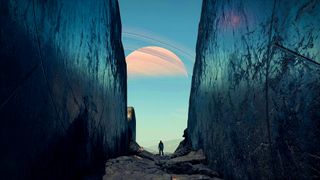
"It’s something we started doing more and more with Fallout 76, and that approach has served that game very, very well," he continues. "You look at all your ideas and you make that mental Venn diagram and see where they cross into the community’s asks. That’s the sweet spot for us. And that goes beyond even Shattered Space, really. That’s every update we have done and will continue to do going forward."
It's hard to imagine the studio moving away from this more reactive approach to updates, given Shattered Space offers familiar ground for players who felt alienated by Starfield's breadth. Predictably, when Pagliarulo looks beyond this month's expansion, the game's community is a big part of the reason he's so excited.
"I feel great about Starfield's future," he says. "I’m excited about the stuff we’re working on now, and the stuff we’ve got coming past that. And it’s insane what our mod community has already accomplished. I think we’re now coming to the point where Starfield is transcending its status as [a] game and becoming something of a platform for science fiction and space content. I mean, I expected the mod community to put stuff out. But not at the rate they are. It’s awesome. Inspiring. It’s everything I’d hoped for."
If you're thinking of diving in for the first time, check out our Starfield review to see what we made of the base game.

Andy Brown is the Features Editor of Gamesradar+, and joined the site in June 2024. Before arriving here, Andy earned a degree in Journalism and wrote about games and music at NME, all while trying (and failing) to hide a crippling obsession with strategy games. When he’s not bossing soldiers around in Total War, Andy can usually be found cleaning up after his chaotic husky Teemo, lost in a massive RPG, or diving into the latest soulslike – and writing about it for your amusement.
- Josh WestEditor-in-Chief, 12DOVE
